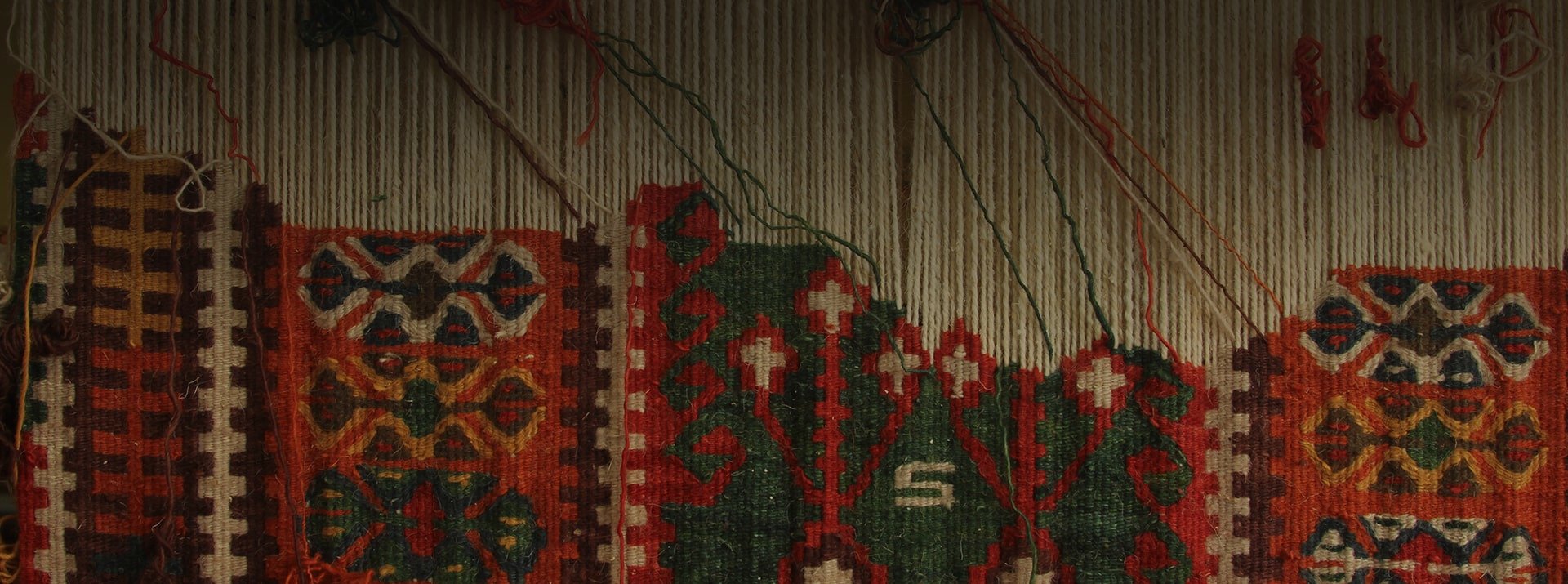An Overview of Oriental Rug Production
A handmade Persian or oriental rug is not only an exquisite work of art, but is also a journey through time to an ancient realm of beauty and mystical charm. There is no other art form that bridges so many centuries, spans so many cultures, and captivates so many people. Iran, India, China, Pakistan, Turkey, Nepal, Afghanistan, Romania, Russia, and Armenia are all home to the talented artisans who produce these truly unbelievable creations.
From the famous Pazyrk carpet that was discovered in a 2,500-year-old Siberian burial site, to the most contemporary modern designs, these fine handmade rugs represent centuries of the most impressive artistry and meticulous craftsmanship. Remarkably, the methods of creation have remained relatively unchanged for over two millennia. In villages and cities, each design is methodically reproduced to scale on a paper graph called a “cartoon” from which the weavers construct the rug, one knot at the time. In other cultures, nomads do not use cartoons, but their remarkable designs are woven from memory and have been passed down from generation to generation.
The weaver then begins a painstaking process that will take months, or even years, to complete. The weaver uses the design to build the rug from thousands, or often millions, of individually tied knots made with the assistance of a loom. The loom, which has remained mostly unchanged over the centuries is designed with portability in mind. Oriental rug making utilizes the vertical loom, which consists of two vertical beams at the rug’s width, called the “warp” threads. The warp threads, typically made of cotton or wool yarn, are tightly stretched along the length of the loom. In a pile rug, pieces of multi-colored woolen yarn are knotted around each pair of warp threads. As each row of knots is completed, weft threads are inserted across the width of the loom, and a new row is begun. The weft and the wrap make up the hidden foundation of the rug, and the knots create the pile and the pattern.
Typically, there are two types of knots—the Persian and the Turkish. An average weaver can tie between ten to fourteen thousand knots in a day, which amounts to about one to two inches of woven carpet. Several weavers work together to make one rug. Two weavers can complete an 8’ x 10’ carpet, of 250 knots per square inch, in roughly six to eight months. After several rows of knots have been tied, a metal comb is used to beat and compress the knots. Weaving threads produce an irregular pile, which is then trimmed evenly with scissors. After the long and difficult work of the weaving is completed, the rug is cut from the loom. The extra threads remain unknotted and form the fringe. The rug is thoroughly washed, dried, and then sheared one last time to even out the pile. It is then ready to ship to customers worldwide.
Silk Road Gallery Rugs hopes that this information about the production of oriental rugs has stimulated your appreciation for this incredible art form. In doing so, we know that you will soon discover that beneath the beauty, elegance, craftsmanship, and artistry of an Oriental rug; there is an experience, a journey to another time and place, and a captivating feast for the senses that will last longer than a lifetime.


